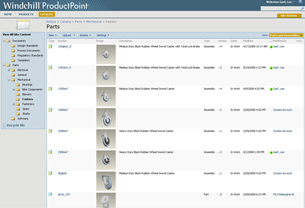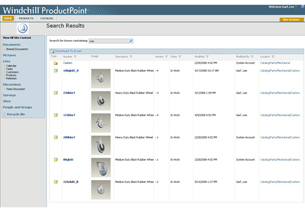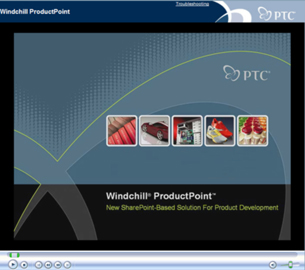Latest News
June 11, 2009
By Kenneth Wong
 Fig 1. PTC’s Windchill ProductPoint borrows many of the networking and collaboration functions found in popular social networks. |
Rob Gremley, PTC’s executive VP of marketing, is well aware of the stigma attached to social networking. In PTC’s blog on Social Product Development, he recalled, “Sometimes when I introduce social product development, I get a little snicker or a cynical smirk from the audience.” Invariably, someone would tell him, “Oh yeah, like we’re gonna use Facebook to run our business, right?”
Facebook, a free networking portal intended to give people a place “to share and make the world more open and connected,” is not meant to be product lifecycle management (PLM) or enterprise resource management (ERP), so it would indeed be disastrous to use it to run an organization.
But PTC thinks it could repackage some of the social-networking features as part of a product development system. In April 2009, PTC began evangelizing the concept of Social Product Development in its blog, the same one where Gremley served as a regular contributor. This week, at PTC User World Event 2009 (Orlando,Florida), the company put the emphasis on its collaborative product-development system, dubbed Windchill ProductPoint.
The product was originally unveiled in June 2008, at last year’s conference. It became available six months later, in January 2009. At this year’s user gathering, by reintroducing the product through Twitter feeds and blogs, PTC branded ProductPoint as a business-oriented alternative to social networks.
 Fig 2. In ProductPoint, users are provided with search functions, in addition to team discussions, calendar, and task lists. |
Social Networking for Engineers
“We’re not talking about using Facebook or MySpace” clarified Tome Shoemaker, PTC’s VP of solutions marketing. “What we’re talking about is a secure, business-ready application.”
The business-readiness comes from Microsoft SharePoint and .NET platforms, the foundation for PTC’s Windchill ProductPoint. While PTC’s Windchill is generally deployed by midsize and large enterprises, ProductPoint is designed to appeal to a different group.
“Smaller companies currently using network folders or FTP sites to manage CAD files may find that Windchill ProductPoint alone is sufficient to meet their needs for protecting and sharing product data,” writes PTC.
What PTC calls “real-time presence detection” in ProductPoint works similar to the way you can tell who’s online and who’s offline among your friends in social networks. In ProductPoint, announcements and alerts will work like the automatic notices issued by Facebook when someone makes a note or comment on your content, be it a photo or a project file.
In addition to search functions and project lists, ProductPoint will be home to team discussions and participants’ profiles. PTC’s ProductView serves as the viewing and markup tool for participants.
 Fig 3. PTC’s video demonstration of Windchill ProductPoint, moderated by Mike Campbell, PTC’s senior VP of product management. |
New Markets
Listing ProductPoint’s benefits, PTC writes, “(You can) adopt (the software) with a minimal learning curve, due to the familiar user interface and integrated environment.” Mimicking popular social networks may also give ProductPoint an advantage in attracting the younger generation, for whom instant messaging and social networking come as second nature.
PLM, the established domain where PTC competes with Dassault Systemes (the company behind CATIA and ENOVIA) and Siemens PLM (the company behind Solid Edge, NX, and Teamcenter), generally focuses on a product’s formal design process – from the time a business has committed a design to production to its premiere in the market. Typically, the workflow demands tight IP control, version control, and structured collaboration during this phase.
With less rigidity and more openness, ProductPoint may allow PTC to hunt for new opportunities in the earlier phases, where a business is exploring new ideas and is willing to expose its ideas to a broader community beyond a small engineering team.
For more, read “Vuuch: The Marriage of Social Media and Product Design” and “Product Development in the Post-Twitter Era.”
Subscribe to our FREE magazine, FREE email newsletters or both!
Latest News
About the Author
Kenneth Wong is Digital Engineering’s resident blogger and senior editor. Email him at [email protected] or share your thoughts on this article at digitaleng.news/facebook.
Follow DE





